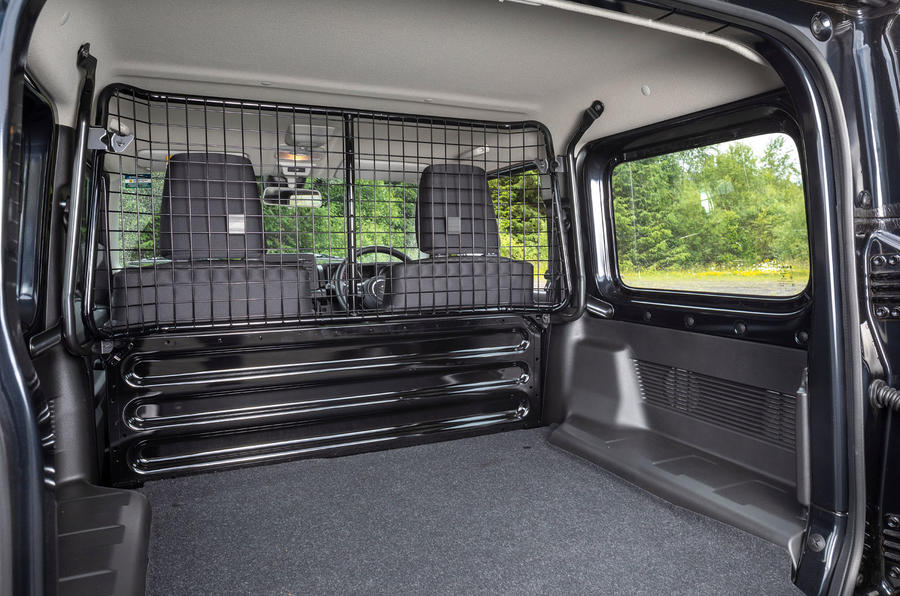Suzuki’s diminutive off-roader returns in commercial form, sans rear seats. Does the Jimny make sense as a ‘van’?
Like a phoenix arising from the ashes, this is the reborn Suzuki Jimny obtaining a new lease of life thanks to an unlikely avenue: the van market.
After launching in 2018, the fourth-generation Jimny quickly received praise and a following which led to supply issues. But while Australia at least sold the Jimny, the small off-roader’s relatively high CO2 emissions always risked jeopardising Suzuki’s European fleet average.
Following confirmation that the passenger car model would be phased out throughout 2020 ahead of changes to the emissions regulations introduced on 1 January 2021, Suzuki eventually confirmed an N1 light commercial vehicle (LCV) version would go on sale this year in its place.
As a van, the Jimny LCV doesn’t contribute to its fleet average and therefore doesn’t impact upon the 95g/km it needs to achieve. Instead, it’s governed by more lenient regulations for vans.
Suzuki Australia says it is interested in the model but it is not yet in the plan for introduction here. But if it does arrive soon, how does it stack up?

The Jimny LCV the first commercial vehicle from the Japanese brand since the APV microvan. But don’t be under any illusions that the commercial vehicle version of the Jimny heralds a triumphant return to vans for the company. It’s very much a way of continuing to sell the fun and exceedingly popular Jimny despite EU regulations forcing the car off sale.
For all intents and purposes, the Jimny LCV is the same as the passenger car, with no differences in its powertrain, suspension or body. Power comes from the same 1.5-litre petrol engine producing 75kW and 129Nm and is paired to a five-speed manual gearbox.
The part-time four-wheel-drive system is unchanged and so too is the three-link rigid-axle suspension with coil springs. What has changed is the removal of the rear seats, which have been replaced by a steel-and-mesh bulkhead to separate the driver and passenger from the new loadspace area.
To achieve a load length of more than 900mm (to enable the Jimny LCV qualify as a commercial vehicle), the front seats have been moved forward 10mm, creating a total usable area of 0.86 cubic metres (or 863 litres), which is 33 litres more than the passenger car has when the seats are folded flat.

It also has the same safety features as the outgoing passenger car, with Dual Sensor Brake Support with automatic emergency braking, an eCall emergency assist function, tyre pressure monitoring, hill hold and hill descent control.
It gets black 15-inch steel wheels and a more basic DAB radio with Bluetooth rather than the touchscreen with sat-nav that top-spec SZ5 car models could have, but the LCV does get a multi-function steering wheel and air conditioning as standard.
With no mechanical changes and the most minor of interior alterations, the Jimny LCV is every bit as capable an off-roader as the car version.
Despite technically being a commercial vehicle, Suzuki expects a similar off-road enthusiast audience to those who were interested in the Jimny car who will now have to live with the compromise of no rear seats as well as an SUV that isn’t well-suited to roads.

The short gear ratios of the five-speed ‘box are beneficial for off-roading, especially when in low-range, but make the Jimny particularly noisy when on-road. The engine is raucous even in fifth gear, and it will be spinning at more than 3000rpm at the national speed limit.
The Jimny van is certainly not a vehicle for the freeway, but it can be just as tiresome on a country road in a different sort of way. The short wheelbase means that the ride is particularly bouncy and it rolls plenty through the corners.
Of course, the target audience will live with that – and not be phased by the van’s paltry 150kg payload, either. Far from practical as a commercial vehicle, the low weight allowance is due to the limitations of the rear axle giving the Jimny LCV a carrying capacity that’s barely a quarter of what a humble wagon can move.

Space for the occupants is also compromised by the addition of the partition, which prevents the seat from reclining, making the seating position more upright and cramped for taller drivers.
When it comes to being a commercial vehicle, other than having a flat floor and a partition, the Jimny LCV has few qualifications or abilities. Suzuki’s guile in adapting it for N1 purpose is a cause for celebration though if you’re in one of the markets that missed out on the original allocation of the Jimny car.







